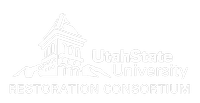Appendix A - PARTIAL SELECTION OF PAST LITERATURE RELEVANT TO LOW-TECH RESTORATION
Table 3 from Chapter 1 - Shahverdian et al. (2019), Appendix A . Below is a partial selection of other relevant manuals, books and technical guidance on process-based restoration of riverscapes and each reference’s relationship to helping restore riverscapes
| Reference | Relationship to Restoring Riverscapes |
|---|---|
| 2005. Brierley, G. and Fryirs, K.: Geomorphology and River Management: Applications of the River Styles Framework, Blackwell Publishing, Victoria, Australia. DOI: 10.1002/9780470751367 | Both a basic introductory text to fluvial geomorphology for understanding riverscapes (via the River Styles framework), and an approach to managing and restoring riverscapes based on a respect and appreciation for the diversity of riverscapes and the different processes that go along with each. |
| 1934. Kraebel, C. J. and Pillsbury, A. F.: Handbook of Erosion Control in Mouuntain Meadows, U.S. Forest Service, California Forest and Range Experiment Station, Berkeley, CA, 69 pp. | Well before terms of ‘process-based restoration’ were coined, this publication from the USFS in the 1930s provides extensive guidelines on low-tech structures and idea of using process to restore degraded meadows. |
| 2018. Maestas, J. D., Conner, S., Zeedyk, B., Neely, B., Rondeau, R., N. Seward, Chapman, T., With, L., and Murph., R. Hand-built structures for restoring degraded meadows in sagebrush rangelands: Examples and lessons learned from the Upper Gunnison River Basin, Colorado. USDA, Natural Resource Conservation Service, Denver, CO, 47 pp. | Provides introduction to use of low-tech structures like Zuni Bowls and one-rock-dams in ephemeral and intermittent streams for meadow restoration. |
| 2018. Pollock, M. M., Lewallen, G., Woodruff, K., Jordan, C. E., and Castro, J. M. (Eds.) The Beaver Restoration Guidebook: Working with Beaver to Restore Streams, Wetlands, and Floodplains. Version 2.01, United States Fish and Wildlife Service, Portland, OR. | Provides guidance on using the ecosystem engineering expertise of beaver to help restore riverscapes. Includes guidelines on translocation, and introduction of idea of beaver dam analogues. |
| 2013. Roni, P. and Beechie, T. (Eds.): Stream and Watershed Restoration: A Guide to Restoring Riverine Processes and Habitats. Wiley, Chichester, U.K.. DOI: 10.1002/9781118406618 | An edited volume on process-based restoration. |
| 2011. Skidmore, P. B., Thorne, C. R., Cluer, B. L., Pess, G. R., Castro, J. M., Beechie, T. J., and Shea, C. C. Science base and tools for evaluating stream engineering, management, and restoration proposals. U.S. Department of Commerce, Seattle, WA, 255 pp. | Useful screening and evaluation questions at planning and permitting stages. Includes the River RAT (Restoration Assessment Tool). |
| 2018. Yochum, S. E. Guidance for stream restoration and rehabilitation. US Department of Agriculture, Forest Service, National Stream and Aquatic Ecology Center. Technical Note no. TN-102.4, 2016. | A recent, regularly updated and rather comprehensive review and annotated bibliography of various aspects of stream restoration and rehabilitation what includes many process-based restoration examples (e.g., beaver, LWD). |
| 2009. Zeedyk, B. and Clothier, V. Let the Water Do the Work: Induced Meandering, an Evolving Method for Restoring Incised Channels. Island Press, Washington D.C. | The idea of using structures that promote processes of letting ‘the water do the work’ (in this case for initiating widening and meandering in incised channels) is a prime example of process-based restoration. |

